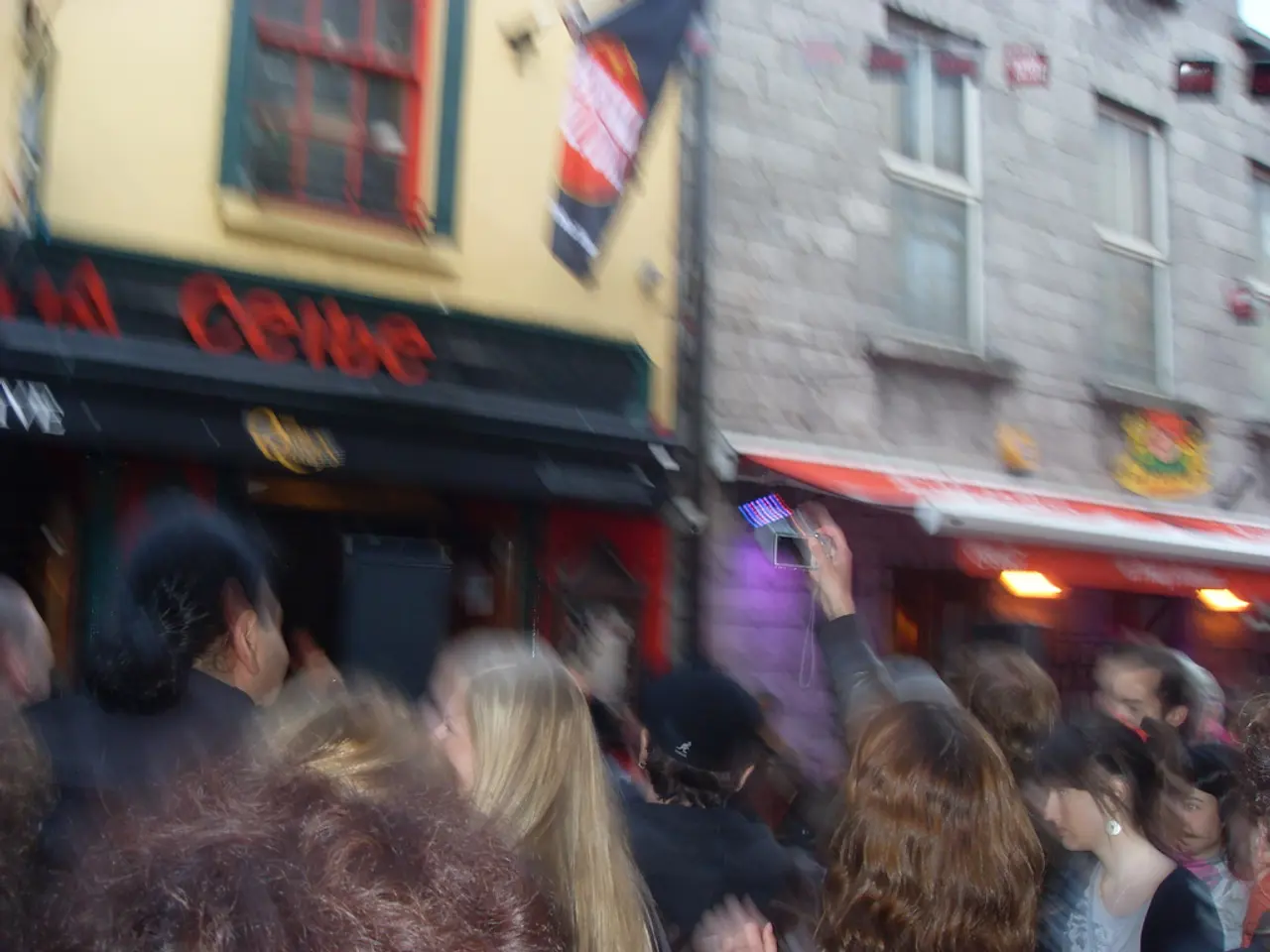Gruff Italian farmers establish toll gates on mountain peaks to monetize popular Instagram locations
In the heart of Italy's stunning Dolomites, a battle is being waged between tourists and locals. The picturesque landscapes, once quiet and serene, are now attracting hordes of visitors eager to capture the perfect Instagram shot. To combat this overcrowding and preserve the natural landscape, landowners have started charging admission fees and setting up turnstiles at popular spots [1][2][4].
One of the most affected areas is the Seceda mountain range, where frustrated farmers have introduced a €5 fee for access to public footpaths. This move is a clear statement of their intention to control the volume of tourists and the impact on the environment and local livelihoods [1][2].
The charges are not just a revenue-generating tactic; they are a form of protest against the uncontrolled growth of tourism that has led to environmental degradation and disruption to farmers' land use [1][2].
Across the country, similar measures are being taken. In the popular La Pelosa beach area, only 1,500 bathers are allowed at a time to prevent overcrowding [3]. In some regions, parking lots have been set up to stop people from driving up the mountainside [5].
The media coverage of the turnstiles has, ironically, attracted more tourists to the Dolomites [3]. However, this influx has also brought about a significant reduction in litter, according to the Santa Cristina Tourist Board [6].
The Alto Adige Alpine Club's president, Carlo Zanella, supports these measures and suggests increasing the price of admission and even banning travel influencers to further manage tourism [7]. Zanella also compares the situation in the Dolomites to Venice, where a 10-euro entrance fee is charged on busy weekends [7].
The local tourism body in Santa Cristina has hired four park rangers to ensure tourists stay on trails and don't cross meadows or fly drones [8]. Meanwhile, in Livorno, walking barefoot is prohibited, and in San Felice Circeo, take-away alcohol is banned both in town and on the beach [9].
Arno Kompatscher, the governor of South Tyrol province, has called on the national government to set restrictions to protect the fragile alpine ecosystems and dissuade local residents from renting out their chalets to tourists [10].
This trend of balancing tourism benefits with preserving local communities and their land is a growing movement in Italy. It serves as a reminder that the pursuit of the perfect Instagram shot should not come at the expense of the environment and local livelihoods.
[1] https://www.theguardian.com/travel/2019/jun/29/instagram-tourism-dolomites-italy-overcrowding [2] https://www.bbc.com/travel/story/20191015-the-tourists-who-are-ruining-the-dolomites [3] https://www.nytimes.com/2019/08/13/travel/dolomites-tourism-italy.html [4] https://www.aljazeera.com/news/2019/8/14/italy-s-dolomites-struggling-to-cope-with-tourist-overload [5] https://www.thelocal.it/20190820/parking-lots-set-up-to-stop-people-driving-up-mountainside [6] https://www.santacristina.it/en/news/santa-cristina-val-gardena-is-cleaner-than-ever [7] https://www.thelocal.it/20190812/dolomites-ban-travel-influencers-and-raise-prices-to-cure-overtourism [8] https://www.thelocal.it/20190812/dolomites-ban-travel-influencers-and-raise-prices-to-cure-overtourism [9] https://www.thelocal.it/20190812/dolomites-ban-travel-influencers-and-raise-prices-to-cure-overtourism [10] https://www.thelocal.it/20190820/south-tyrol-governor-calls-for-tourism-restrictions-to-protect-dolomites
- Amidst increasing travel to the Dolomites, news of environmental degradation and disruption to local livelihoods have surfaced in numerous environmental-science and social-media platforms.
- To tackle overcrowding and preserve the fragile alpine ecosystems, some local administrations have turned to measures like charging admission fees and setting up turnstiles at popular spots, as seen in the Seceda mountain range and La Pelosa beach area.
- In an effort to balance tourism benefits with preserving local communities and their land, some regions have imposed restrictions like limiting the number of bathers at beaches or banning certain practices such as walking barefoot or taking away alcohol, as in Livorno and San Felice Circeo.
- The motion to restrict tourism and protect the environment has gained support from figures in the entertainment industry, with the president of the Alto Adige Alpine Club suggesting an increase in admission prices and even a ban on travel influencers, similar to the practice in Venice.





